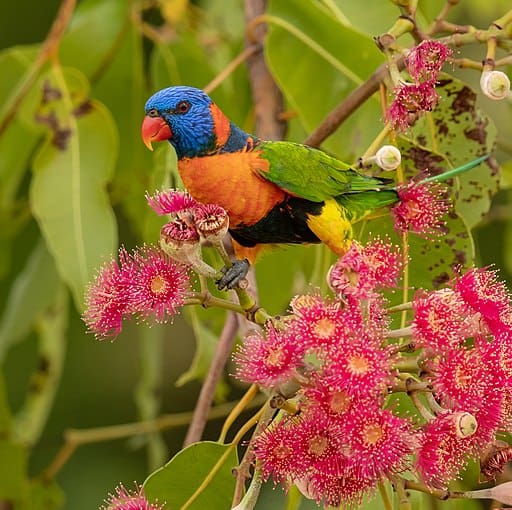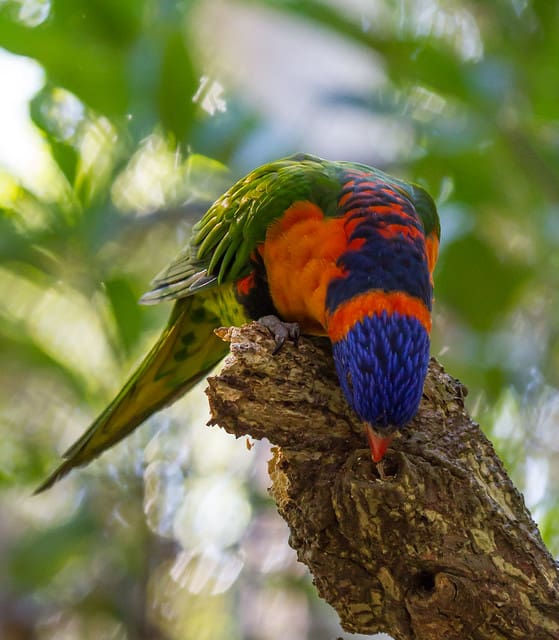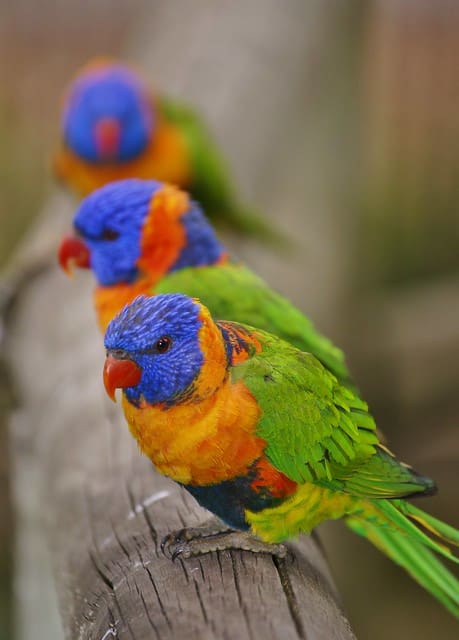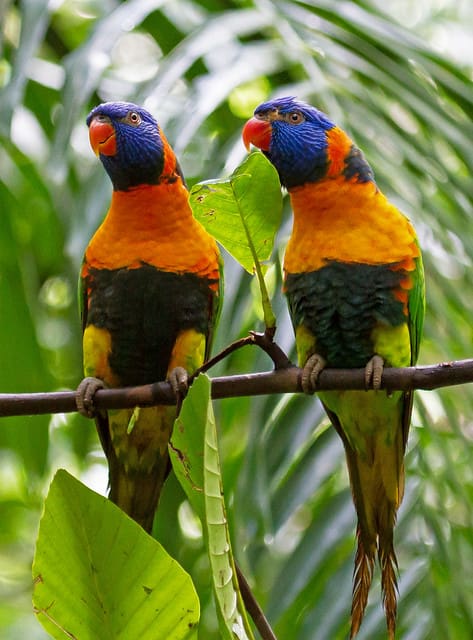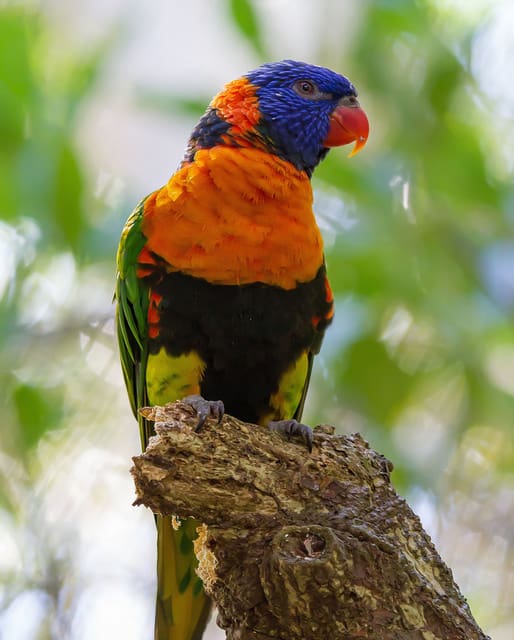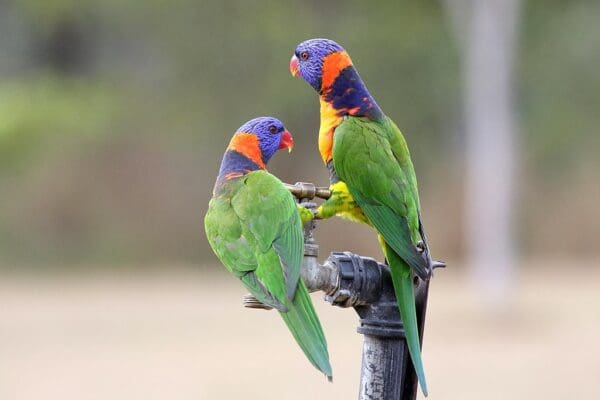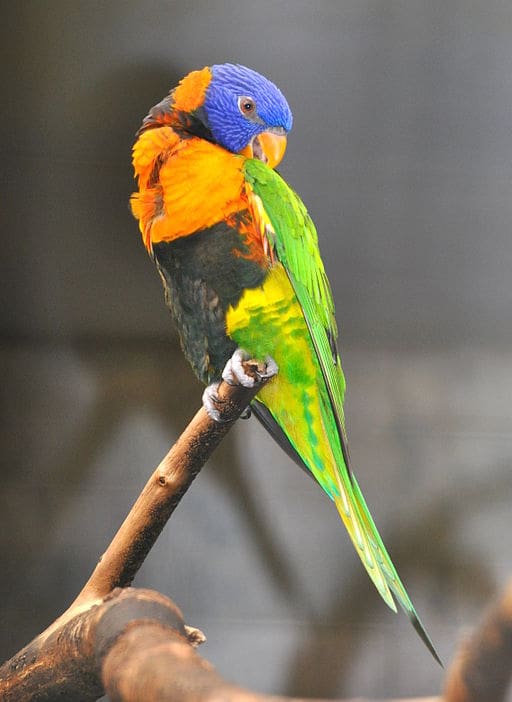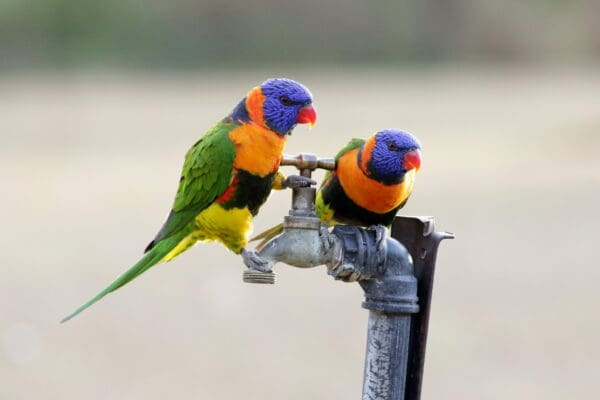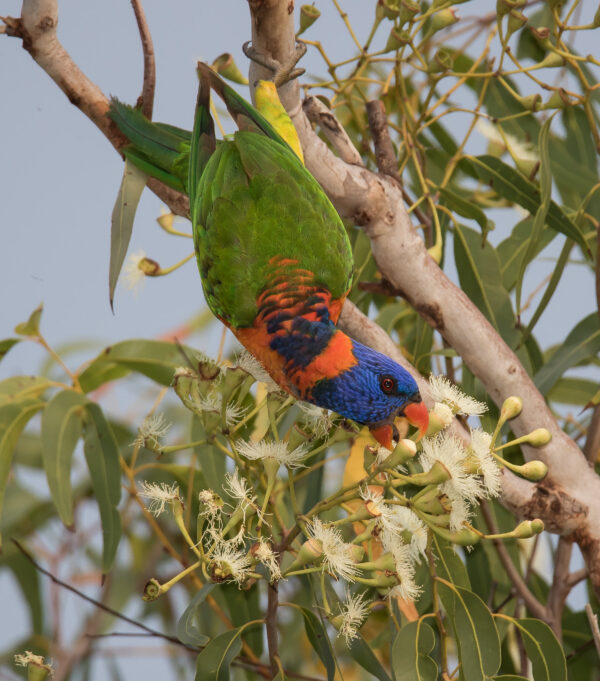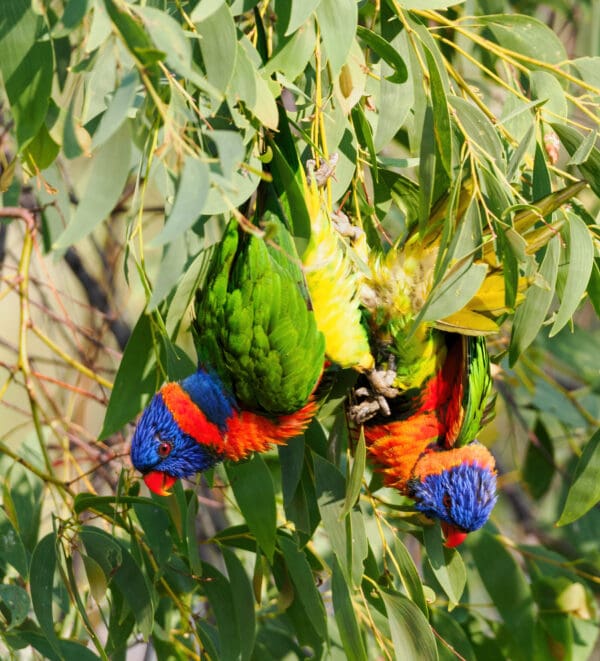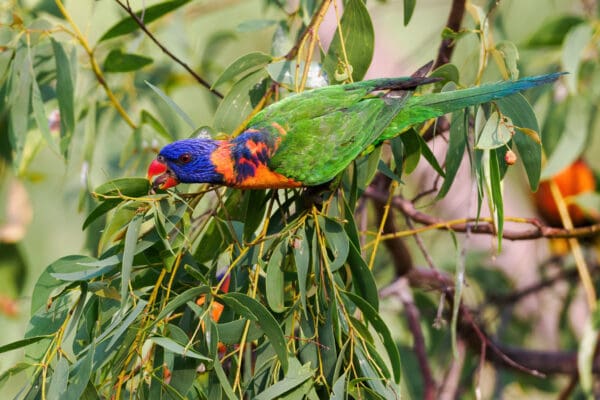Red-collared Lorikeet
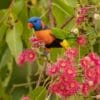
![© Geoff Whalan [CC BY-NC-ND 2.0] via Flickr A wild Red-collared Lorikeet perches on a stump](https://parrots.org/wp-content/uploads/2023/01/wpt_Red-collared-Lorikeet_2012-19-100x100.jpg)
![© Roger Smith [CC BY-SA 2.0] via Flickr Wild Red-collared Lorikeets perch on a fence](https://parrots.org/wp-content/uploads/2023/01/wpt_Red-collared-Lorikeet_2012-18-100x100.jpg)
![© Geoff Whalan [CC BY-SA 2.0] via Flickr Wild Red-collared Lorikeets perch on a branch](https://parrots.org/wp-content/uploads/2023/01/wpt_Red-collared-Lorikeet_2012-17-100x100.jpg)
![© Geoff Whalan [CC BY-NC-ND 2.0] via Flickr A wild Red-collared Lorikeet perches on a stump](https://parrots.org/wp-content/uploads/2023/01/wpt_Red-collared-Lorikeet_2012-15-100x100.jpg)
![© Graham Winterflood [CC BY-SA 2.0] via Wikimedia Commons Wild Red-collared Lorikeets drink from an irrigation tap](https://parrots.org/wp-content/uploads/2023/01/wpt_Red-collared-Lorikeet_2012-12-100x100.jpg)
![© Quartl (Own work) [CC BY-SA 3.0] via Wikimedia Commons A Red-collared Lorikeet preens its shoulder](https://parrots.org/wp-content/uploads/2023/01/wpt_Red-collared-Lorikeet_2012-1-100x100.jpg)
![© Graham Winterflood [CC BY-SA 2.0] via Flickr Wild Red-collared Lorikeets perch on a tap](https://parrots.org/wp-content/uploads/1990/10/Red-collared-Lorikeet-lg-Graham-Winterflood-100x100.jpg)
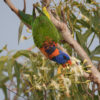
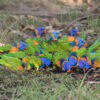

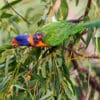
DID YOU KNOW?
Wild Red-collared Lorikeets can be found in mixed-species groups of parrots.

Trichoglossus

rubritorquis
Size:
26 cm (10 in)
Weight:
103–140 g (3.5-5.0 oz)
Subspecies including nominate:
one
Colour Adult:
Both adults violet/blue head with lilac/blue streaks on face; throat and side of nape blackish; collar orange/red; yellow/orange breast without barring; dark green abdomen; green/yellow thighs to undertail coverts; green upperparts and tail; orange underwing coverts; yellow, wide band under the wing. Beak orange/red. Eye dark orange.
Colour Juvenile:
As in adults.
Call:
Repeated notes, sharp, rolling while in flight. Shrill chattering while feeding. Soft notes at rest.
More Information:
Content Sources:
BirdLife International
Cornell Lab of Ornithology/Birds of the World
Parrots in Aviculture, Low, 1992.
Lexicon of Parrots, Thomas Arndt.
Captive Status:
Rare outside of Australia.
Longevity:
20 yrs in the wild, 15-25 yrs in captivity.
Housing:
Enclosure with drain in floor, or suspended cage over tiled or concrete floor.
Diet:
Nectar – a commercial type specially formulated for small species or a mix of baby cereal (lactose-free) and honey, malt extract or molasses, mixed with filtered water, made fresh once or twice daily, making up at least 40 percent of the diet; vegetables and fruit especially apple, pear, orange, cactus fruits and bananas, and one or more daily of: carrot, fresh corn, green leaves; plus dried figs soaked in water for a few hours, spray millet and a small amount of soaked or sprouted sunflower seed and small amount of canary seed.
Enrichment:
Loves bathing, hanging toys, puzzle/foraging toys, foot toys, ladders, swings, socializing; noisy toys (bells, squeakers), bird safe chewables (vegetable tanned leather, safe woods).
Nest Box Size:
L-shaped box, 51 cm x 36 cm (20 x 14 in).
Clutch Size:
2 to 3
Fledging Age:
8-9 weeks
Hatch Weight:
—
Peak Weight:
—
Weaning Weight:
—
World Population:
Unknown, decreasing.
IUCN Red List Status:
Least Concern
CITES Listing:
Appendix II
Threat Summary:
Not globally threatened. The population is suspected to be decreasing due to unsustainable levels of exploitation.
Range:
Northern Australia.
Habitat:
Most common in lowlands but found up to 2400 m (7872 ft). Wide variety of areas including settlements, forest, coconut plantations, savanna, Eucalyptus stands and mangroves.
Wild Diet:
Feeds mainly on nectar, fruit and flowers of Eucalyptus bleeseri, E. miniata, E. polycarpa, E. tetrodonta, Melaleuca viridiflora and Grevillea pteridifolia; in addition, Pandanus spiralis, Bombax ceiba, Terminalia grandiflora, Planchonia careya, Amyema sp., Eucalyptus clavigera, E. confertiflora, E. latifolia, E. miniata, E. porrecta, Melaleuca symphyocarpa and Xanthostemon paradoxus. Also takes insects.
Ecology and Behaviour:
Found in mixed flocks with other parrots; in small noisy groups. Nomadic, as they are dependent on flowering trees. Roosts communally in groups of hundreds of birds. Will also roost and nest on the ground on some of the predator-free islands. Displays frequently.
Clutch and Egg Size:
2 to 3 ovate eggs, 27.0 x 22.5 mm (1 x 0.9 in).
Breeding Season:
Breeding recorded most months in N Australia.
Related Links:
—
